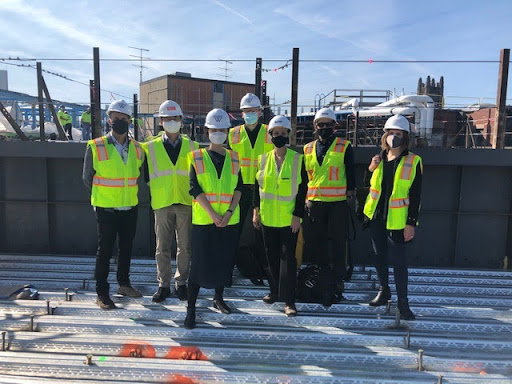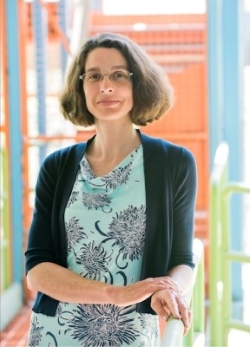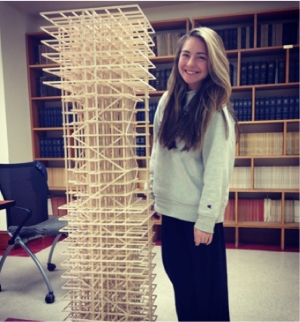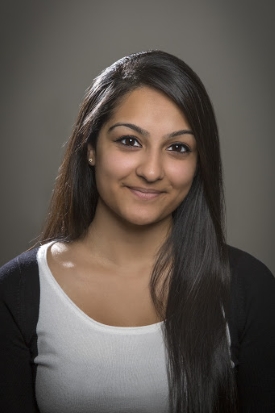The Flower: the present, the platform we use to grow new seeds.

While the first wave of diversity puts women at the forefront of change, the AEC industry still has a long way to go. As the field works to meet changing needs of an increasingly diverse population, we look towards the new generation and their present working conditions to better understand the strides of their predecessors. After talking with several rising professionals, a common theme we heard about is the need to foster dialogue about not only diversity in numbers, but rather a true inclusivity where those diverse persons feel supported and are given the resources to grow.
When interviewing Haydée Casellas, a young architect who moved from Puerto Rico to the U.S for her education and current career at Schwartz Silver Architects Inc, we learned that exclusion starts even before entering the workforce. She recalled her undergraduate project reviews, where students showcase final architecture projects and get feedback, and noted being treated unfairly compared to her White male colleagues. "I think by the end of my five year program I was very aware of how it was playing out... I went in so excited to learn about all of these things and slowly realized that [my peers] had more priority than me."
The self-doubt that arises from studying or working in an unsupportive environment can stress one's mental health, and has various manifestations. One example is imposter syndrome, which occurs when an individual worries that they're not "good enough" and that someone will expose them as a fraud. According to research, women and especially women of color experience imposter syndrome more often than their White and male colleagues. Casellas spoke to us about her own experience with this issue. "I have imposter syndrome every day, I've just learned to get comfortable with it. When I went to college everything came at once, it was like a culture shock. Everyone was so brilliant and impressive, and I felt like I'd never measure up."
"I have imposter syndrome every day, I've just learned to get comfortable with it. When I went to college everything came at once, it was like a culture shock. Everyone was so brilliant and impressive, and I felt like I'd never measure up."
In order to "push up against" this feeling, Casellas sought out internships during her college years to gain real-world experience, and found herself gravitating towards diverse firms. For instance, she worked at Ensamble Studio which was headed by a Spanish architect, and NADAAA Inc. led by an Iranian architect in Boston. These experiences allowed her to engage with professionals from various backgrounds and carve out a space to learn from supportive professionals. Even today, she maintains contact with coworkers turned friends from those internships.
Other interviewees also talked about college experiences when they didn't necessarily "fit in" with their classmates. Abigail Van Vlaenderen, a Assistant Superintendent at Turner Construction and Wentworth College graduate, shared her experiences studying in a predominantly male college. To be clear, she enjoyed the atmosphere and working with her fellow students, and found that it prepared her well for post-graduation. However, she would also like to see more women entering the college. To combat this disparity for the future, Van Vlaenderen put herself forward and gave campus tours so prospective female students wouldn't be "scared or intimidated by the collegiate atmosphere," but instead see students like herself thriving in the tough but rewarding environment.

We also talked to Megan Nuñez, longtime professor at Wellesley College and more recently the Dean of Faculty Affairs and Executive Sponsor of the Science Center, which during the renovation project has brought her into the AEC world. Despite her current success in academia, she recalls how during her own undergraduate years she had trouble connecting to her peers due to a difference in priorities. "Education meant something different to me. I couldn't take for granted the sacrifices my parents had [made] to send me to college", my mother didn't get to go to college, I [couldn't] screw this up." Throughout her journey in science, Nuñez often had to forge her own way forward. Now, she is gratified to see additional resources for students like she once was, such as Wellesley's First Generation Network which provides resources for students who are the first in their family to attend college. She believes that although there are still big challenges to ensuring all students are fully supported, "we're making progress" in bringing in another layer of diversity into higher education

Outside of academia, women continue to face various long-standing challenges in the workforce. Allyson Wheelwright, a Senior Engineer at Haley & Aldrich (H&A) spoke to us about a common issue with gender norms. "There are moments when you try to be nice and easy going so everyone's getting along, but then that translates as flirting so you kind of have to take the niceness away and be factual." Women across various fields have faced similar issues with these gendered norms of workplace behavior, always treading the line between being professional and being perceived as "too bossy," or being friendly and risking misinterpretation. Women are forced to learn how to effectively navigate professional spaces with a degree of hyper awareness that men simply do not have to.
"there are moments when you try to be nice and easy going to everyone's getting along but then that translates as flirting so you kind of have to take the niceness away and be factual."

To combat ongoing issues women face in the AEC workplace, many rising professionals have turned to their support networks, created spaces for difficult conversations, and utilized the resources made available from industry leaders. Rupinder Kaur, who is an Estimator and the Diversity and Outreach Manager at Elaine Construction, has begun initiating these difficult conversations about diversity and inclusion with her colleagues. These small-group meetings incorporate people across departments and offer a chance for individuals to speak their minds about current issues. Even if those attending don't necessarily completely change their stances and actions, at least they will walk away with eyes opened to "seeing something other than what they have been believing their entire lives." While she has seen some resistance from those who have been in the industry for a long time, Kaur believes that their collective work has helped form common ground for an important goal. Other facets of her work in this managerial role include looking for more diverse subcontractors, and impacting young children by encouraging employees to bring their children to the office and construction sites, to show them the positions and passions they could one day discover for themselves.
Adelman emphasized that "focus groups that include student leaders and staff" are key to understanding the current trends and needs of students. To bridge the relationship between the administration and students, they hire interns from the Massachusetts College of Art and Design to not only create employment opportunities for these rising designers, but also to bring in new perspectives. From her years of working closely with students for projects and working at MSCBA, Chrisos has plenty of experience passing down her knowledge to younger peers. "It can be a mixed blessing because sometimes you have to tell them what they don't know, which can be an awkward scenario. But, it's better if they do speak up because it brings more voices."
Wherever one goes it's important to see oneself represented in the spaces one interacts with, and to "focus on how you can have your tribe and get strength from them," says General Manager of Turner Construction Megan Hooper-Berdik. Hooper-Berdik remembers breaking into the AEC industry during the late 90's and being one of few women in construction, which led to obstacles such as microaggressions in a white and male dominated atmosphere. One solution Turner has found for encouraging discourse about these ongoing experiences are employee resource groups (ERG) that are geared towards women and people of color. An example is the "Make Your Mark" group, which "engages mothers from various ages to discuss tips and challenges of parenting and working full time." These resource groups provide a safe space for coworkers to engage with each other beyond their current work, and they also allow Hooper-Berdik and other female leaders the opportunity to mentor and offer advice on how they've handled various situations. The strides that Hooper-Berdik and others have taken allow newer Turner members such as Van Vlaenderen to continue conversations about social and political issues, to make space for others, and to lift up the next generation of leaders.